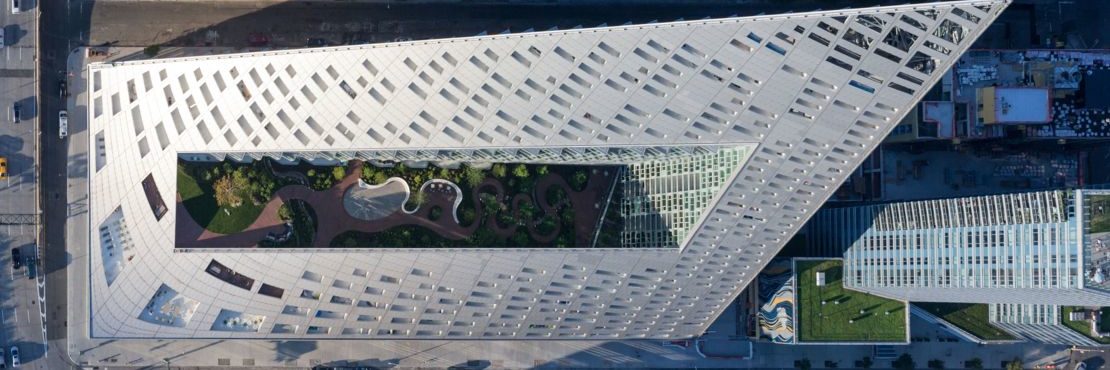
Are you new to Greenroofs.com or to the field of greenroofs and greenwalls?
Browse here first and start your global journey with us.
Tell me just a bit about Greenroofs.com
Founded in 1999, Greenroofs.com is a dynamic interactive website, online media company, vibrant social network, and comprehensive online resource Connecting the Planet + Living Architecture promoting People, Projects & Solutions.
People? International designers, readers, companies, organizations, stakeholders, government, Green Roof Professionals+ many more!
Projects? Currently with over 1,700 Project Profiles in our Greenroofs.com Projects Database, browse projects from across the planet to inform and inspire you for your next living masterpiece.
Solutions? Find people, companies & products for your next project in the Greenroofs.com Directory. Join and put your brand in front of the world.
We Connect everyone via Greenroofs.com, our social media presence, and the biennial Greenroofs & Walls of the World™ Virtual Summits (2019, 2017, 2015, 2013, and 2011). The Mission of the Virtual Summits is to inform, share & create a global social media experience online for learning & networking via the power of the Internet.
Read more in About Us.
Can you recommend a greenroof or wall designer or specific company? Where can I find this information?
No, Greenroofs.com does not recommend specific people or companies, but you will find a variety of professionals, manufacturers & suppliers listed in the Greenroofs.com Directory to assist you in creating the best solutions for your needs, in your area of the world.
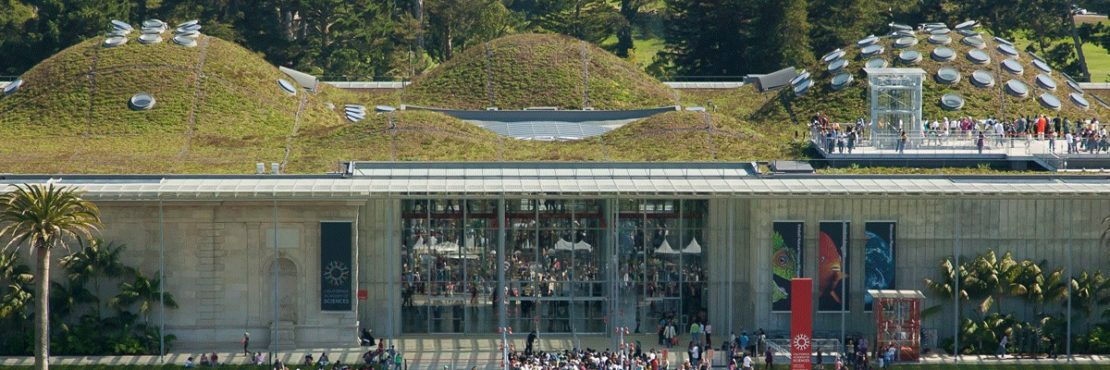
Why does Greenroofs.com call them “greenroofs” together and not “green roofs?”
For a variety of reasons: a compound one-word term is more descriptive and exact in its meaning, like dishwasher or microwave; these are household words included in the dictionary, meaning the combination of their parts. A “dish washer,” for example, is someone who washes dishes – but a “dishwasher” is obviously a machine that washes the dishes. A “green” roof could refer to the fact that any of the roofing material is ecologically sound, or “green” in nature, such as a recycled or naturally harvested product, or uses sustainable design elements in some way. “Green” can be applied to energy-efficient components, such as highly reflective roofing membranes (e.g., white single plies or modified bituminous roof systems topped with reflective coatings), or roofs of sprayed polyurethane foam.
A “green” roof could also refer to the color of the roofing material, be it green ceramic tiles, metal, or asphalt shingles.
We did so much original information searching in German in 1999 that it was just natural that we should call them “greenroofs,” as they are referred to as “Dachbegrünungen” – “roof greenings” or greened roofs. Of course, the German language always joins nouns for descriptive purposes, but it really does convey the meaning of a particular word. As such, there should be no confusion of the meaning of “greenroof” – as a vegetated roof cover, be it extensive or intensive.
Greenroofs 101
For those of you who are more visually oriented, watch our Greenroofs 101 video above from 2007. It’s really just a snippet of a much longer video we had created, but it’s become quite popular over the years. I’m sure we’ll re-do it one of these days.
What happened to the Greenroofs 101 section that had hundreds of pages?
With the release of our new website design in September, 2018 we decided to update Greenroofs 101 entirely. This will be a major part of Phase II. This entire sub-web was based on Publisher Linda S. Velazquez’s original independent research study which she completed in 1999 for the University of Georgia in partial fulfillment of her Bachelors of Landscape Architecture degree (2000).
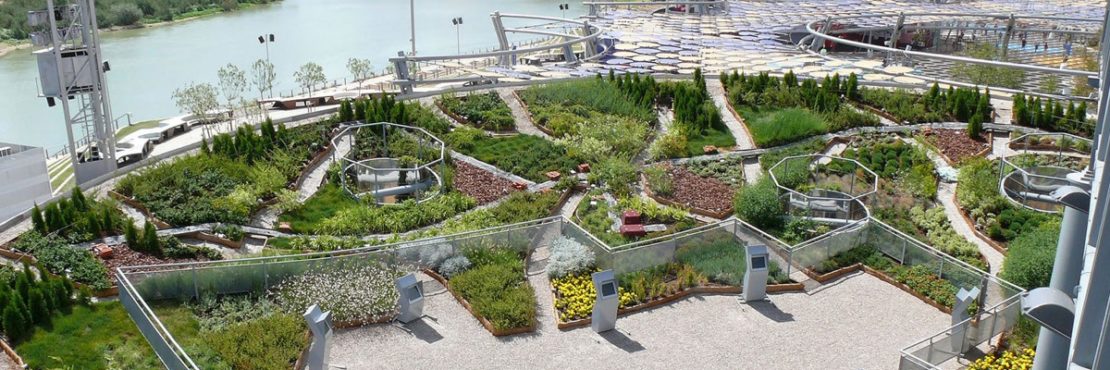
Greenroofs
OK, so what is a greenroof?
Basically, greenroofs, also known as sky gardens, living roofs, are vegetated roof covers, with growing media and plants taking the place of bare membrane, gravel ballast, shingles or tiles. The number of layers and the layer placement varies from system to system and greenroof type, but at the very least all greenroofs include a single to multi-ply waterproofing layer, drainage, growing media and the plants, covering the entire roof deck surface. There are three main types of greenroofs – extensive, semi-intensive or intensive, although a greenroof can be designed with a combination.
What’s the difference between an extensive and intensive greenroof?
Commonly, the roof function or objective of the roof space determines the design – is it just an ecological cover or is it intended as an amenity, i.e., human recreation, vegetable gardening, etc.? The limiting factors for greenroofs include: the roof loading capacity or maximum dead and live weight loads, determined by a structural engineer; the slope of the roof and perhaps the client’s budget.
Based on these, the depth of the growing medium therefore determines the plant palette. Although a building may be constructed with a variety, there are three main types and so we have the following definitions:
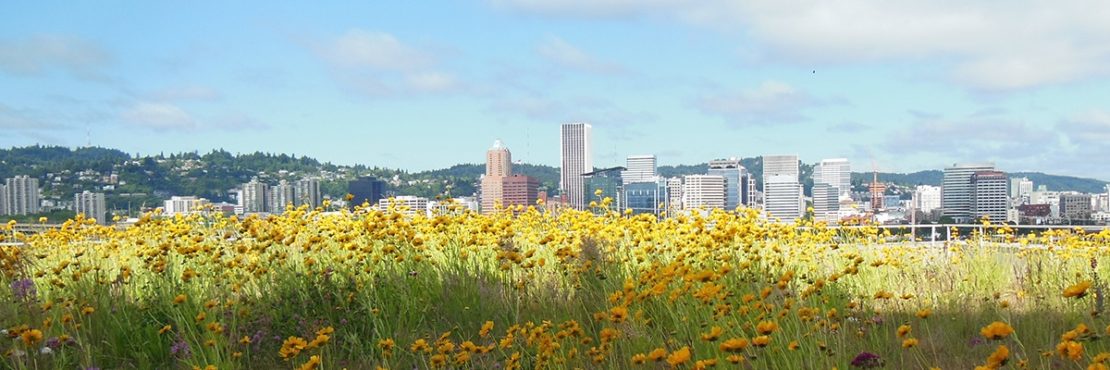
Extensive – Also referred to as eco-roofs, and low-profile, they have thinner and less numbers of layers, so therefore they are lighter, less expensive and very low maintenance. Extensive greenroofs are built when the primary desire is for an ecological roof cover with limited human access. The minimum growing media or soil substrate starts at about 2 1/2” to 5 or 6” – approximately 13 – 15 cm – at most (although vegetative mats can actually have even less than 1″ of growth media). The engineered soil media contains 70 – 80% inorganic or mineral material (or higher) to 20 – 30% organic (or less). Low growing, horizontally spreading root ground covers with general maximum plant heights of 16 – 24” are ideal. Alpine-type plants are successful because they are high drought, wind, frost, and heat tolerant, all necessary attributes for greenroofs. Plants include sedums and other succulents, flowering herbs, and certain grasses and mosses. Fully saturated weights range from a low of about 10 – 50 lbs/sq. ft. Compare that to common river rock ballast which weighs about 12 lbs/sq. ft. Extensive greenroofs can be constructed on slopes up to 30°, and much steeper ones can be installed with engineered soil-retention products, raised grids, or laths to hold plants and growing media in place.
Semi-Intensive – A combination of an extensive greenroof with areas of higher plant depths, the semi-intensive living roof will have both areas of lower than 6” of growing media and higher, ranging from 8-12” or 20 – 30 cm.
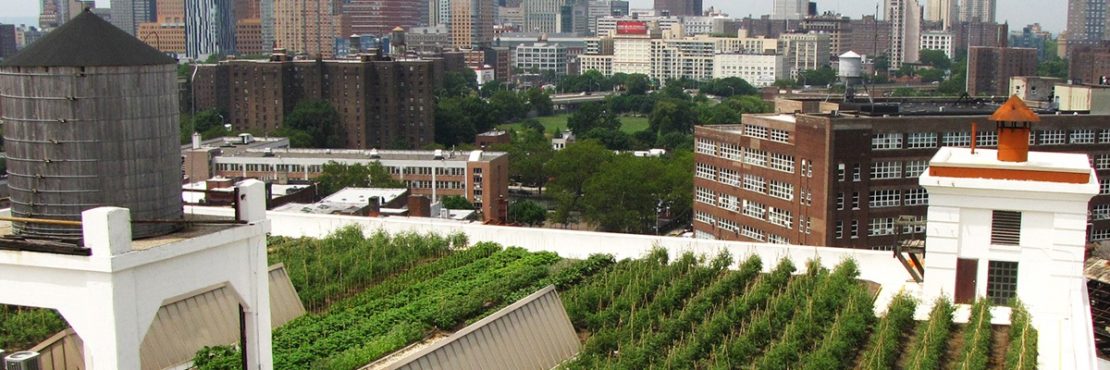
Intensive – Also referred to as high-profile, they look like traditional roof gardens because a much wider variety of plant material can be included since growing media depths are increased. The growing media starts from about 12” – 30 cm – and can range up to 15 feet or more, depending on the loading capacity of the roof and the architectural and plant features that the building owner desires. The engineered soil media usually contains about 45 – 50% organic material to 50 – 55% mineral, and fully saturated weights range from about 80 -120 lbs/sq. ft. and up. Architectural accents such as waterfalls, ponds, gazebos, etc., are possible and these greenroofs provide recreation spaces and encourage interaction between people and nature. Maintenance requirements are also more intensive, and of course, these roofs are relatively flat.
What’s the difference between an intensive greenroof and a roof garden?
A roof garden usually consists of containerized plantings of various sizes placed on top of a roof. In an intensive greenroof system, all the various layers are applied on top of the entire roof deck surface, allowing unimpeded drainage and a more even weight distribution over the whole roof. The vegetation is planted directly into the soil, not just in planters or containers.
But we do consider roof gardens to be intensive greenroofs.
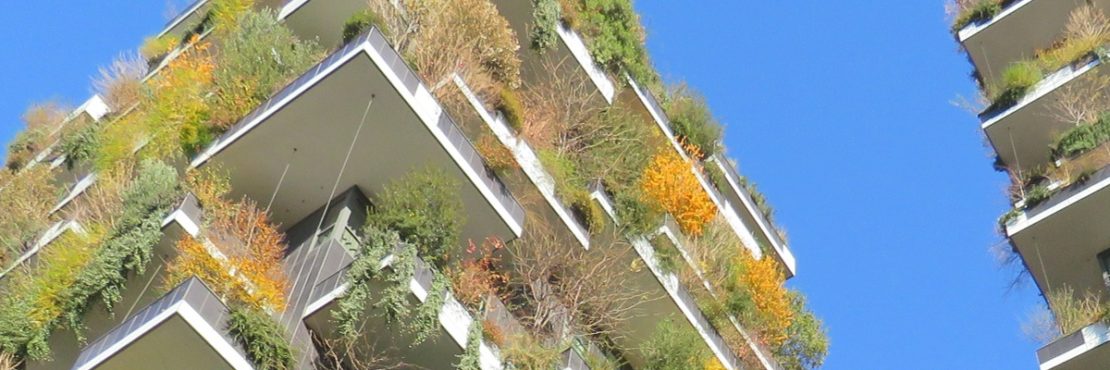
Explain inorganic and organic growth media.
Inorganic material refers to a high porosity natural mineral element such as expanded slate, shale, extruded clay, rock wool, lava or pumice, etc., which provides aeration (and could also provide water retention capabilities), and prevents total compaction of organic matter through settling over time, and acts as a good drainage medium. The inorganic medium maintains void or air space necessary for the plant roots to breathe and for the excess water to drain properly.
Organic means well-rotted humus material (hen manure, guano, mushroom compost, etc.) augmented with organic fibrous material and a small amount of clay particles. This mixture holds and slowly releases essential trace elements necessary for the health of the soil community.
Is an extensive greenroof really maintenance-free?
No! Every roof needs to be checked periodically, and extensive greenroofs are no different. It is recommended to do a semi-annual maintenance review, at which time you can look for invasive weeds, disease, stray tree seedlings, etc. Plants, no matter how low growing and drought tolerant, are still living, breathing beings and should be monitored.
Do I have to water my greenroof?
Extensive – There is some dissension here because some professionals want a true “nature roof” that is left to natural succession, and believe in zero irrigation. But most people agree that Yes, extensive greenroofs should be watered at least occasionally during the first year of establishment just like any designed landscape. If you have chosen the correct drought tolerant, groundcover plants wisely for your area, irrigation can be kept to a minimum. So, many choose not to water at all.
Drip irrigation is ideal for large projects plus it is inexpensive and delivers the right amount of water to the best area – the base of the plants. But then the answer should be water the greenroof only as needed in periods of drought. In this case the plants would certainly benefit from occasional watering during extreme periods of duress – that’s one reason a water source should be always available.
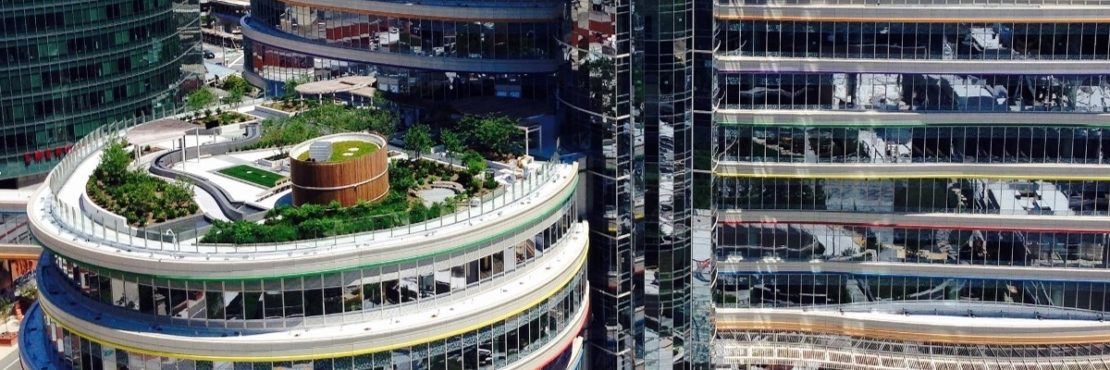
Intensive – Yes, since an intensive greenroof can accommodate a large variety of plants, shrubs and trees – and therefore have greater root mass – their watering requirements are higher than succulents and herbs. Treat an intensive greenroof like any garden or landscape at ground level, but take into account that high winds can be very drying and by comparison they’ll most likely need more water. Usually large intensive greenroofs and roof gardens with deep planters have an irrigation system installed.
So what about irrigation or supplemental water – can it still be environmentally friendly?
Yes. You can install a traditional active irrigation system with smart features and/or even with a solar powered system. Pair this with a recycled rainwater collection system, harvested in cisterns at roof deck or at ground level, and you’ve got the ideal self-sustainable answer to supplemental water and how to power it.
Should I fertilize my extensive greenroof?
There is some dissension about whether it is recommended or not to fertilize an extensive greenroof – perhaps the answer is Yes, as most German roof greening professionals recommend. Use encapsulated slow release fertilizer twice during the first year of establishment in the early spring and fall, and then yearly thereafter for the next 4 years or so. At that point, the natural cycle should take over and enough organic material should have composted itself back into the soil substrate to provide sufficient nutrients to the plants. Don’t use soluble N fertilizer as it can get into the runoff.
Do I have to worry about a root-resistant protective layer if I only have an extensive greenroof with nothing but sedums?
Yes! Just because you design a greenroof with tiny horizontal roots, it doesn’t mean you can’t get a surprise plant with a huge taproot looking for water any way it can get. Seeds come in from many sources – the wind, and from those beautiful birds that you love seeing on your greenroof so much. We have seen oak and maple seedlings growing in ½” of rotted compost on a pitched roof, for example. Those roots will seek water wherever possible in times of drought – way into the asphalt membrane! If your roofing membrane is organic in nature – asphalt, asphaltic bitumen, etc., you need a root barrier, no matter how low growing your extensive greenroof plants are.
The root barrier needs to be a dense inorganic material that inhibits root penetration, like polyethylene. This protective layer can be a heavy duty pond liner (EPDM, etc.) or other non-organic element that contains an injected root repellent, such as a copper element (banned in some areas). Also, many North American drainage products bypass a separate root barrier layer and now incorporate a root-repellent ingredient in their synthetic filter fabric, placed atop the drainage layer.
Does the growing media or soil really have to be “engineered?” Why can’t I just put dirt or top soil on my greenroof?”
Don’t call it dirt, and yes, it needs to be engineered! Regular garden soil is heavy, can contain pathogens, undesirable insects, and WEEDS! Basically, you don’t know what’s in it. Greenroof “soils” need to be lightweight to conform to roof loading weight restrictions, note settle over time, drain properly and yet retain a certain amount of rain water. Single source system providers always use a proprietary engineered growing medium.
When creating a custom design, some designers will approve a certain amount of topsoil to reduce costs, but great care needs to be taken with this option. In this case, a typical mix is to use 1/3 clean topsoil, 1/3 compost, 1/3 perlite or other inorganic material.
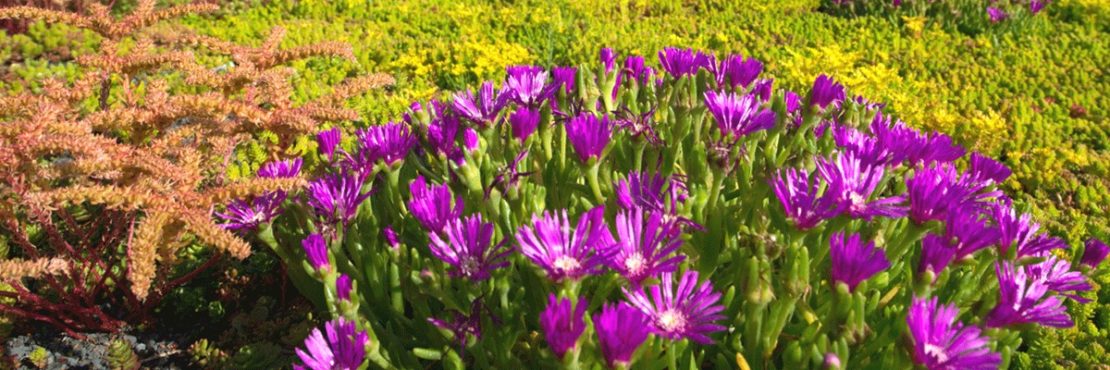
Should I worry about flammability issues?
Yes! Always have access to an adequate water supply in case of fire, which can occur to any type of building. First of all, choose plants that are inherently non-flammable – succulents or others that store water in their stems, and stay away from certain ornamental grasses and mosses that could become kindling material in an extremely dry situation. For example, some species of Miscanthus are very flammable. Succulent plants and a high inorganic soil media can actually act as a fire barrier.
Always ensure that your roof has a 12-24” minimum perimeter of vegetation-free zone around the edges of the roof – both for a fire break and for sure-footed access of firefighters to the roof. This can be rounded stones or pavers, and in some cases modular systems which have passed wind uplift testing.
Who should maintain my roof? Can I?
It depends on the type and size of the greenroof. Most property owners and managers homeowners could check a small flat or low pitch greenroof. A roofing professional should maintain if it is large or intensive, checking for integrity along with more obvious issues. A maintenance agreement of at least two checks per year for the first two years of establishment should be included with the greenroof contractor or design/build company. Longer is better.
Or you can work out an arrangement with the roof maintenance staff of your building with the proper training. And if you are referring to an elaborate hotel roof garden, for example, an existing maintenance garden staff could be trained as well as procuring a longer professional maintenance agreement.
What about costs?
Extensive – We’ve seen them listed as low as $9/sq .ft. for 3” of growing media and sedums. More commonly the range is between $14 – $25/sq. ft., (including roofing membranes).
Intensive – $25 – $40 and up. The sky is the limit here!
But every project is unique, and certainly there are ways to lower the costs. Economy of scale is also very relevant. The Ford Motor Company River Rouge Plant greenroof in Dearborn, MI, for example, came in around $4/sq. ft., but we’re also talking about an extensive greenroof that’s almost 500,000 sq. ft in size. And, people are always building a better mousetrap.
Which is the most expensive component of a greenroof?
Just like any roof, the waterproofing membrane (or membranes) is the single highest cost item of a new roof.
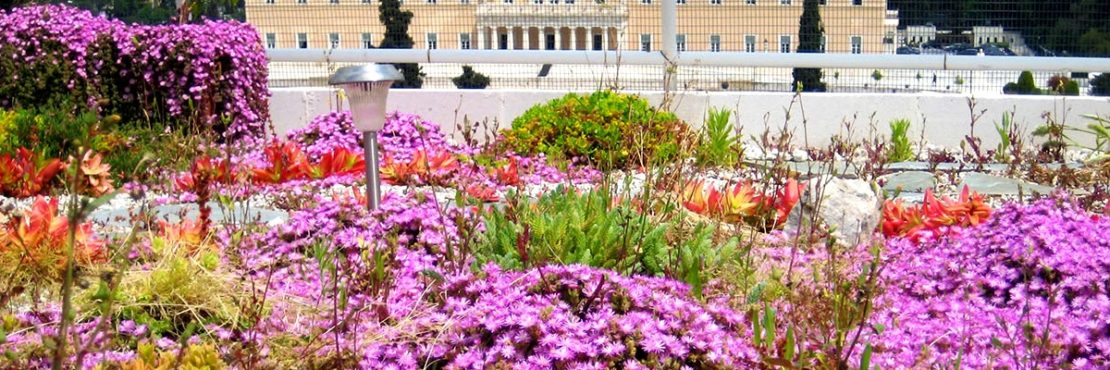
Why shouldn’t you plant just sod or grass on a roof? They did it that way in Scandinavia and northern North America for hundreds of years.
You can, of course, but should that be your first choice, unless you’re trying to recreate a historical structure? Sod roofs resulted from a lack of natural resources in challenging, harsh climates, so people had to use the only materials they had at hand. The traditional method was to cut pieces or “bricks” straight out of the ground and place them upside down on top of the roof’s wood structure for insulation and right side up for the sod blocks to face the sun. Of course these were blocks of native grass, but in modern times the word “sod” has become synonymous with “turf” grass, the highly engineered monoculture of one type of grass gown in rolls and used for residential lawns and commercial applications such as for sports turf.
But a monoculture of plant species is never considered healthy nor is desired in a land- or roof-scape for a variety of reasons: It would be open to plant disease, or an insect infestation could wipe it out, as in the great potato famine. A monoculture is simply not ecologically healthy in nature – a plant community should be ecologically diverse – with many types of vegetation to be vibrant. Modern turf or sod needs to be watered, fertilized, and mowed regularly, so they would incur greater costs, have a higher ecological footprint, and be considered high maintenance.
A living roof of mixed native grasses is a different thing altogether. A deeper growing media profile would be necessary and once established, this type of greenroof would require less maintenance.
Are extensive greenroofs necessarily green in color?
No! Many greenroofs appear red, orange, yellow and all colors in between at different times of the year because the fleshy leaves of various succulents and herbs change colors throughout the year. Also, greenroof plants are not all evergreen, nor should they be. What are the project’s drivers? For example, designing livings roofs for biodiversity might mean areas go brown in late summer, but they come back with beautiful ephemeral wildflowers the next year.
The beauty and anticipation of the change of seasons add to the color palette. And of course, flowers vary, too, in colors from whites to yellow, pinks, deep reds and purples and blues. A virtual living carpet or tapestry varies from season to season as plant communities naturally migrate in their random regenerative patterns. The bottom line is to be informed, or if you’re the designer, inform your client’s expectations.
How many LEED™ points can a greenroof qualify for?
Greenroofs installed on 50% or more of the roof surface can contribute to at least 6 LEED™ points (more are possible) up to a possible 15 or 16.
“Overall, Green Roof systems installed on 50% or more of the roof surface virtually guarantees 2 LEED points and can contribute an additional 7+ points toward LEED-certification, almost 20% of the total needed for a project to be LEED-certified.” ~ Green Roof Technology
See a detailed list from our colleagues at Green Roof Technology, and consult a LEED™ Accredited Professional for specifics.
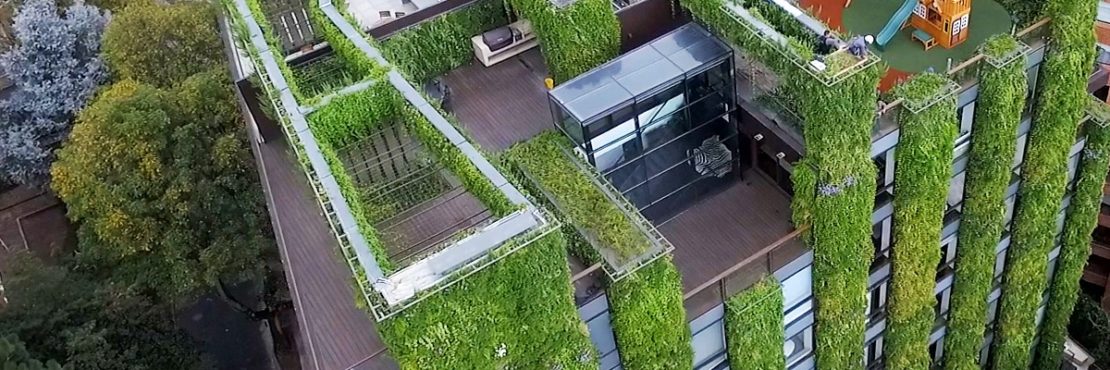
Greenwalls
Green walls have been especially gaining popularity, partly due to their verticality – we can see, touch, and smell them much more readily than planted rooftops. They are used to reference a variety of vegetated wall surfaces but all have plants grown in supported vertical systems both inside and outdoors.
What kinds of greenwalls are there?
Within the term Green Wall or Greenwall we have two specific categories: Green Façades and Living Walls, and each have two additional categories of product applications.
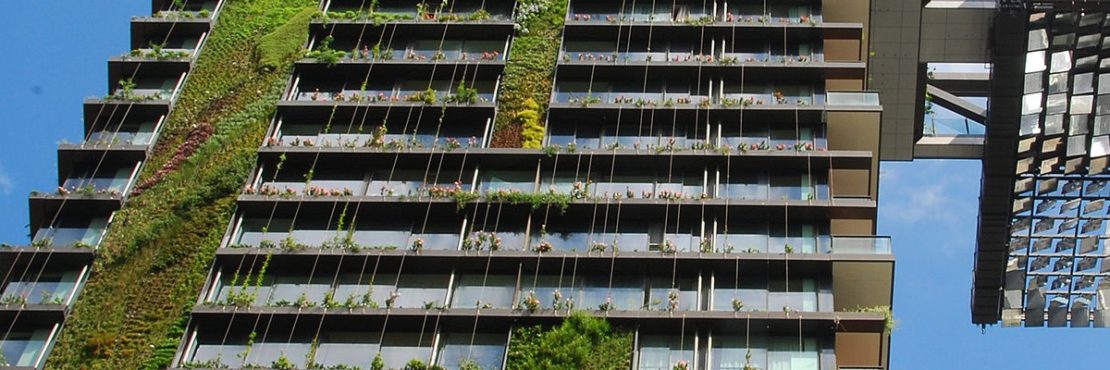
What is a Green Façade and what are the different types?
Green Façades, also referred to as facade greening, feature a training structure or trellis that is separated from the building which supports vines or climbing plants planted directly in the ground or in planters. Growing upward onto the support system or cascading downwards, plants receive water and nutrients from the earth or container. Both systems support a variety of climbing plants, can be customized, and many are available in a variety of colors. The two types are:
Multidimensional, welded wire trellising systems and
Stainless steel cable and mesh systems.
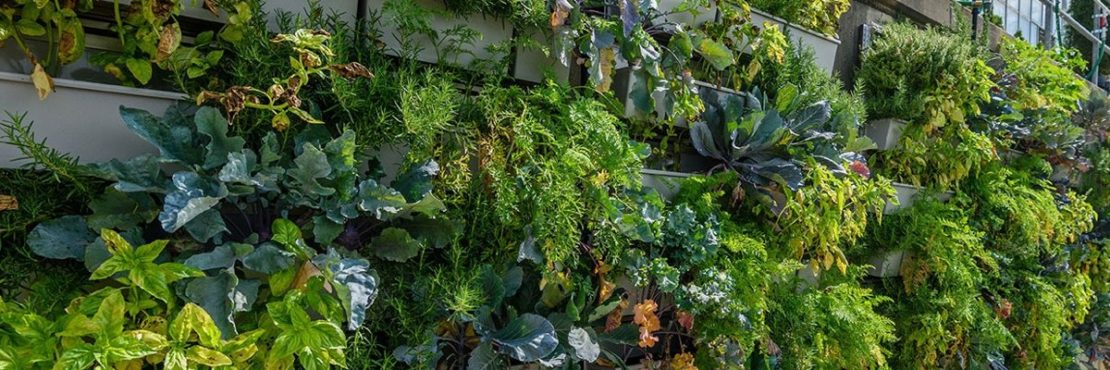
What is a Living Wall and what are its different types?
Living Walls or vertical gardens are grown within with a structural support and can be either installed/fastened on the face of the wall, becoming part of the building envelope, or a freestanding structure in a growing medium or liquid nutrient. The plants can be either pre-vegetated or planted onsite with modules or large panels, and receive water and nutrients from within the vertical support itself, most commonly via irrigation.
Hydroponic based systems are one type of Living Wall, which is the cultivation of plants in nutrient solution using recirculated water on a structural frame. The roots are embedded into a polyamide felt or similar fabric for the rooting media. A network of pipes controlled by valves provides a nutrient solution containing dissolved minerals needed for plant growth. Famed French botanist Dr. Patrick Blanc invented the Mur Végétal, or hydroponic vertical garden system, with over 250 projects completed across the world.
Soil or Growing Media based walls utilize flexible modules or planters of various materials and sizes that retain the growth media to support the plant material. They also are attached to a frame structure, sometimes away from the wall to allow air flow.
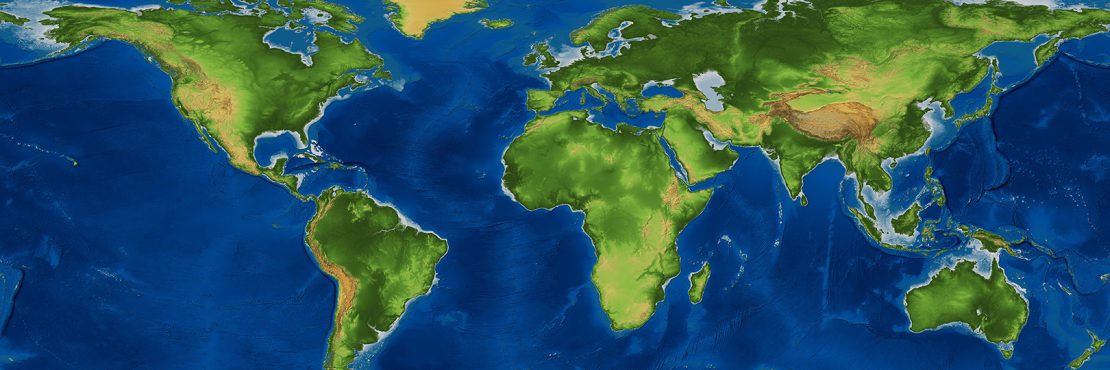
Projects
Where can I find info about different greenroof & greenwall projects?
Search the Greenroofs.com Projects Database, which is international in scope, growing daily, and a free community resource. You can refine your search by keyword and many fields. Submit your projects by using the easy form or in a variety of ways.
So if I do a particular defined search in a variety of fields, does that mean that all the greenroof & wall projects in the world are truly listed here?
No! Greenroofs.com continues to gather profiles from various sources across the globe, and many are in the works from various organizations, manufacturers, designers, owners, etc. It will take years to catalog all these projects properly, but that is one of our missions!
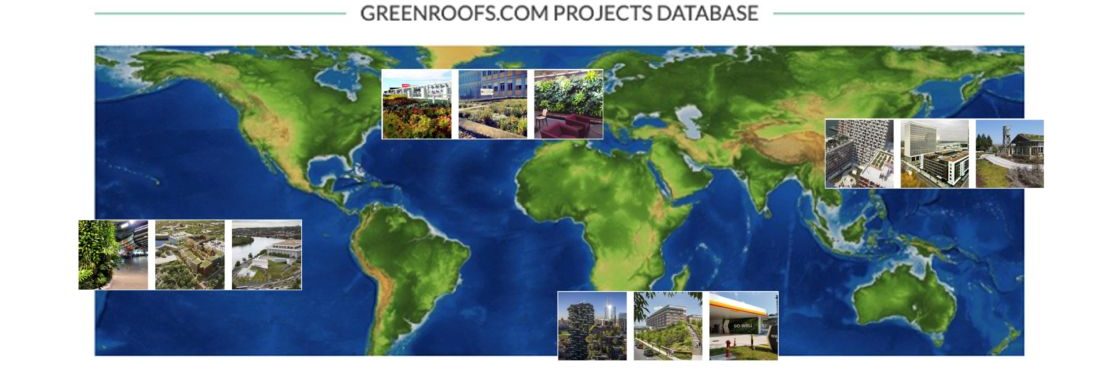
How Do We Select the “Featured Project” on Greenroofs.com?
Selected from Project Profiles within the Greenroofs.com Projects Database, our “Featured Project” series is showcased every other week, except during certain holidays and special events such as our Greenroofs & Walls of the World™ Virtual Summits. You can always find the latest 12 Featured Projects on our Projects page.
The Featured Project is highly popular among our readers and receives a tremendous amount of media coverage and social media attention. We maintain an editorial calendar of awesome projects in queue and those we’re considering. Informative and fun, in effect it’s also a great way of promoting yourself via projects you’ve designed or worked on, or products you’ve supplied!
As our international readership and advertiser base continues to grow, please read the Updated Featured Project Guidelines for you to follow if you’d like to have one of your case studies highlighted. But the single most important thing we need is to have Project Profile already in the Greenroofs.com Projects Database, so you can simply visit Submit a Project for all the required info.
In Depth Resources
Where can I read more in detail?
Greenroofs.com Publisher Linda Velazquez wrote an in-depth two-part article for Environmental Quality Management for the Summer and Autumn 2005 journal regarding the greenroof concept – see the descriptions below and download the PDF’s to read more.
Organic Greenroof Architecture: Sustainable Design for the New Millennium
Environmental Quality Management, Volume 14, Issue 4
by Linda S. Velazquez
Summer 2005
“In the summer 2005 issue of this journal, I introduce the concept of greenroofs — vegetated covers installed atop roof decks. I describe some basic greenroof technologies, and explain some of the key environmental, economic, aesthetic, and psychological advantages that greenroofs offer.
This article presents an overview of the greenroof concept. Included is discussion of the history of greenroofs — which, though relatively modern in their present form, are rooted in ancient vernacular architecture and in the innate human desire to connect the built environment with nature.
I discuss basic greenroof technologies, and explain some of the key ecological, economic, aesthetic, and psychological advantages that greenroofs offer to both users and owners….”
Organic Greenroof Architecture: Design Considerations and System Components – Growing a new roof – sustainably
Environmental Quality Management, Volume 15, Issue 1
by Linda S. Velazquez
Autumn 2005
“High-performance buildings, green design practices, and sustainable technologies are becoming increasingly important influences on architectural practices around the world. They are even beginning to influence standards within the construction industry.
In this article, I discuss the design of greenroofs, with details on system components, maintenance, cost issues, and the range possible applications. I also offer some thoughts on the future of greenroof development.
Greenroof Design: General Considerations
The greenroof design process is truly site specific, and requires open communication between the building owner and the design team…”
 Greenroofs.comConnecting the Planet + Living Architecture
Greenroofs.comConnecting the Planet + Living Architecture

